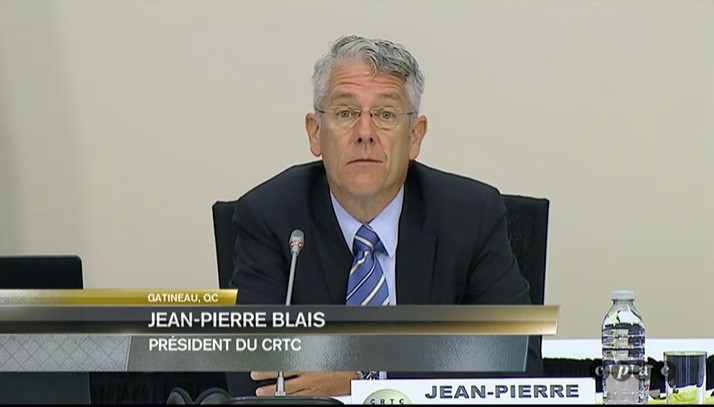
Says BDUs fight comparison tools
GATINEAU – That some broadcast distributors say their bundling programs are very much like loyalty points is wrong, the Public Interest Advocacy Centre (PIAC) told the CRTC on the second day of a hearing into flexible channel packaging (read our coverage from day one here).
The organization, which filed joint submissions in the proceeding with the Consumers Association of Canada (CAC), argued that because TV providers are treated like common carriers under the BDU regulations, the rules say they can’t unjustly discriminate against a certain class of customers. This is exactly what some are doing by not allowing bundle discounts for skinny basic package subscribers.
John Lawford, executive director and general counsel at PIAC, explained under questioning that because certain BDUs are preferring one set of customers – those with more expensive TV packages – over those with skinny basic, that’s unjust discrimination and not allowed under the regulations.
“This is one of those situations where it’s not a widget factory and it’s not a hotel chain, it’s a regulated broadcasting distribution undertaking with a regulation that says you shall not unduly discriminate and we think the discrimination between the two is undue and certainly there is a preference,” he said.
“They are then deciding who is good enough to get their discounts, that’s unjust discrimination right there.” – John Lawford, PIAC
Later in PIAC’s more than one-hour of testimony, Lawford further explained the group’s position in response to a question from CRTC chair Jean-Pierre Blais. When Bell and Rogers refer to eligible services in order to qualify for bundle discounts “they are then deciding who is good enough to get their discounts, that’s unjust discrimination right there,” he said.
During the written phase of the proceeding, the broadcast distributors complained that the consumers associations were trying to make them offer exactly the same entry level package. In its appearance, PIAC responded that that’s not the case.
Standard information is key, noted Lawford, not a standard offer. “What we’re concerned about for the most part is its hard to compare across BDUs or even between packages because the extra charges and the content of the small package are either not told to people or not completely spelled out in one place and in a consistent manner,” he explained.
Alysia Lau, legal counsel at PIAC, added that some BDUs have been upfront and clear about what’s included in their skinny basic package such as installation charges, bundling discounts and set top box fees. Others have been less so. Generally, this reflects the difficulty Canadians had (and may still have) in figuring out the small entry level package.
“What we’re looking for is a greater clarity and in some ways kind of a greater uniformity … just to ensure those charges are clearly presented,” she said.
Lack of clarity and ways to improve it were the only issues raised during the reply phase. All the major broadcast distributors agreed that they could do a better job and committed to doing so particularly with pick and pay slated to come into force on December 1.
BDUs take issue with comparison tools
It was revealed during the hearing that attempts by PIAC to build a cable package comparison tool and host it on its website were thwarted by the BDUs. Blais had asked why PIAC had suddenly removed an early version of the tool from its website. “Were you put under pressure by the industry, the BDUs in particular to take it down? Were there threats of litigation? What happened?” he asked.
“Yes we were threatened, not with a lawsuit, it didn’t get that far. Discretion is the better part of valor,” said Lawford noting that two BDUs contacted PIAC. One wanted to correct inaccuracies in information and the other wanted their information removed from the site.
“If they want to sue us, well, make my day.” – Jean-Pierre Blais, CRTC
“It was our understanding and our judgment that if we didn’t take stuff off, the next step would likely be litigation, I presume, on some sort of intentional interference with economic relations or misrepresentation or something like that,” he said.
Blais wasn’t surprised that PIAC was under pressure from the BDUs to remove or correct the information. He noted that the CRTC has itself posted data and it too received letters from the broadcast distributors.
“We think it’s important for us to provide those consumers with information to make informed choices in a dynamic market place. But I’m not surprised of your account because we received similar letters or contacts. If they want to sue us, well, make my day,” he said.
The rest of this process, which is primarily about BDU license renewals, is administrative, not public. The Commission will have an announcement about what it heard at these two public days prior to the launch of pick-and-pay, which comes December 1st.
Photo, a screen cap from CPAC.ca, is from day one.



